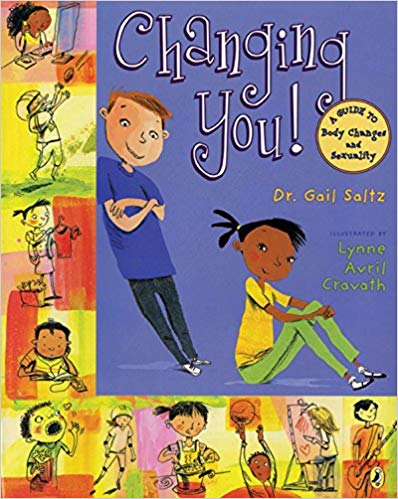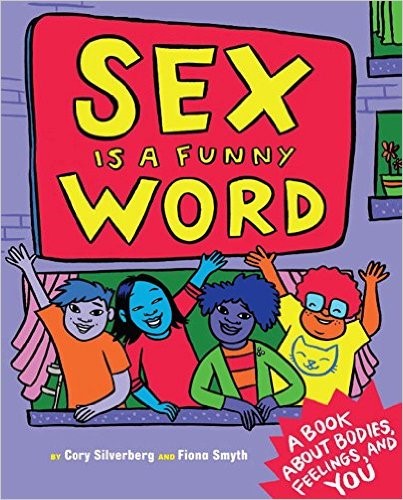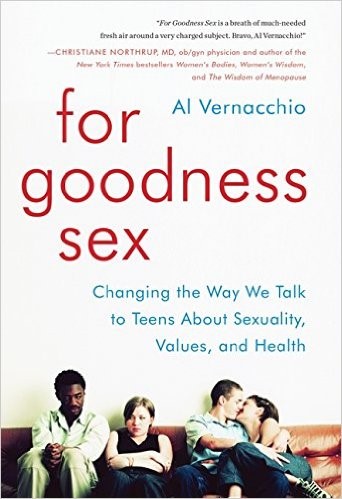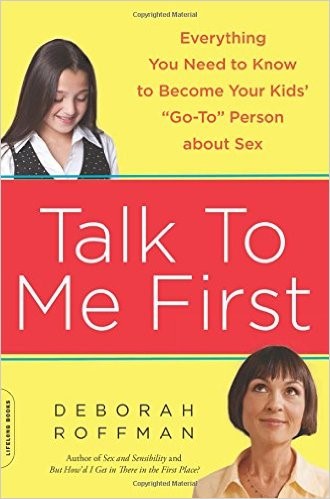What Is HIV?
This video defines Human Immunodeficiency Virus (HIV) and its effect on the body’s immune system. It also dispels common myths regarding HIV, such as “you can tell by looking at someone whether they have HIV,” “you can get HIV through casual contact with someone who has HIV,” and “birth control can prevent HIV.” The video also goes over the ways HIV is transmitted through bodily fluids (sex, sharing needles, being breastfed by someone with HIV) and states that pregnant women with HIV need proper treatment to ensure their baby is not born with HIV. The video also mentions products that can prevent someone from getting HIV, such as condoms and PrEP medication. The video closes by emphasizing the importance of getting tested regularly for HIV and other STDs. [AMZ-027]
Youth
You’ve probably heard the terms HIV and AIDS used together, which may have led you to believe they are the same thing, but in reality they are different. HIV stands for human immunodeficiency virus. AIDS stands for acquired immunodeficiency syndrome. HIV is the virus that causes AIDS. HIV is considered a sexually transmitted disease (STD) because it can be transmitted through certain sexual behaviors. This means that HIV cannot be spread through behaviors like shaking hands, hugging or kissing. When someone is infected with HIV, the virus begins to attack the immune system, which can make someone more likely to get sick from other germs. It can take many years for someone with HIV to develop AIDS, and some people who are HIV positive never develop AIDS. While there is no cure for HIV, there are medicines that can help people live long and healthy lives like people with other chronic diseases (such as diabetes). It’s important to know that you cannot tell if someone has HIV just by looking at them. The only way to know for sure if a person has HIV is for that person to get tested for HIV and tell you the results of their HIV test.
FAQs
No! HIV is not like the common cold or the flu. You cannot get it from sharing food or drinks with someone who is infected. It also cannot be spread by shaking hands, kissing or hugging. HIV is spread through exposure to an infected person’s blood, semen, vaginal fluids or breast milk. It is most commonly transmitted through sexual contact or sharing needles with someone who is infected.
Like with other STDs, the only 100-percent effective way to avoid getting HIV through sexual behaviors is to abstain from vaginal-penile sex, oral sex and anal sex. Your next best bet is to practice safer sex, such as using condoms and/or a dental dam every time you have vaginal, anal or oral sex. You should also get tested regularly for STDs and HIV and ask your partners to do the same.
When people are first infected with HIV, they often have no symptoms or very mild symptoms, which is why they must get tested to know for sure if they have HIV. Later, the virus can weaken the immune system, allowing specific infections and diseases to occur. At this point, the person is diagnosed with AIDS. People with an AIDS diagnosis still have HIV in their bodies, and if they have unprotected sex or share needles, they can transmit the virus to someone else.
Not all people with HIV develop AIDS. It’s impossible to say how someone’s body will respond to the infection, and there are different strains (kinds) of HIV. Over time most people with HIV get a weakened immune system that makes them more susceptible to infections and diseases that people with healthy immune systems typically don’t get.
Parents
The initials HIV and the acronym AIDS are often used together, leading people to believe they are the same thing when in reality they are different. HIV is the virus that can cause AIDS, and AIDS is the illness that can occur later when the immune system is no longer able to fight off infections like it is supposed to. HIV is a sexually transmitted disease (STD) that can be transmitted from one infected person to another through certain sexual behaviors. Despite many myths that exist, the truth is that not all bodily fluids transmit HIV. The bodily fluids that can transmit HIV are semen, vaginal fluid, blood and breast milk.
When someone first gets infected with HIV, they usually do not show any symptoms. This is why getting tested regularly is important. If someone is tested and they do have HIV, there are many medications that can help treat the symptoms of HIV and allow someone to live a healthy, symptom-free life for many years.
It is common for young people to hear many myths about HIV, so having a trusted adult in their lives that they can talk to about this topic is important. There is also a lot of stigma around having HIV, so it is essential to provide young people with medically accurate and age-appropriate information on this topic.
Even though most people don’t like to talk about HIV, it is important for caring adults to talk with young people about HIV transmission and prevention before they begin engaging in sexual behaviors with a partner. While it is good to normalize HIV and STDs, it is also important to be clear with young people about how HIV and STDs can affect them and why it is important to practice safer sex.
Before young people begin engaging in sexual behaviors, they should know how they can reduce the risk of contracting HIV by decreasing their number of sexual partners, getting tested before sexual activity and properly and consistently using latex barriers, like condoms, female (internal) condoms and dental dams. Research shows that young people whose parents talked to them about condoms before they began having sex are more likely to use condoms at first intercourse and thereafter.
It’s also very helpful for young people to know how to get tested once they begin having sex. HIV and other STD testing and treatment is offered through your family doctor or at most family planning clinics and community health centers. Home testing kits are now available in most major pharmacies as well. HIV testing often involves either a simple blood test or a mouth swab. Young people should understand that HIV can be treated with medicines provided by a doctor, but there is no cure for HIV.
Young people may also have questions about a medicine called PrEP, which stands for pre-exposure prophylaxis. PrEP is a daily pill that can be prescribed to help reduce the risk of contracting HIV. In studies it has been shown to be highly effective when used properly. This medication is often prescribed for individuals who are considered to be at higher risk for contracting HIV.
Talking about HIV with the young people in your life lets them know that they are not alone and they can come to their parents or guardians when they have questions or need support.
CONVERSATION STARTERS
If you start essential conversations about topics like HIV with your children, then they will know they can come to you with questions. The easiest way to start these conversations is to talk about issues as they arise in everyday life while you are doing things like watching TV together. Symptoms, testing and condoms may not just come up in conversation, but it is important to talk about these issues.
Here are some ways to start these conversations:
For example, if a sex scene comes up on TV, there is an opportunity to talk about whether the partners talked about safer sex or used a latex barrier, like a condom or dental dam. While you may be nervous about having these conversations, a simple, “Wow, do you think they’re worried about STDs or HIV?” is one way to start the conversation.
If you are shopping together in the market or drugstore, walk up the aisle where the condoms are hanging and ask your child if they know what condoms are and how they are used. Purchase a pack to take home and open so your child can see what they look like and how they are used.
Educators
The initials HIV and the acronym AIDS are often used together leading people to believe they are the same thing when in reality they are different. HIV is the virus that can cause AIDS, and AIDS is the illness that can occur later when the immune system is no longer able to fight off infections like it is supposed to. HIV is a sexually transmitted disease (STD) that can be transmitted from one infected person to another through certain sexual behaviors. Despite many myths that exist, the truth is that not all bodily fluids transmit HIV. The bodily fluids that can transmit HIV are semen, vaginal fluid, blood and breast milk.
When someone first gets infected with HIV they usually do not show any symptoms. This is why getting tested regularly is important. If someone is tested and they do have HIV there are many medications that can help treat the symptoms of HIV and allow someone to live a healthy, symptom-free life for many years.
It is common for young people to hear many myths about HIV, so having a trusted adult in their lives that they can talk to about this topic is important. There is also a lot of stigma around having HIV, so it is essential to provide young people with medically accurate and age-appropriate information on this topic.
Even though most people don’t like to talk about HIV it is important for caring adults to talk with young people about HIV transmission and prevention, before they begin engaging in sexual behaviors with a partner. While it is good to normalize HIV and STDs, it is also important to be clear with young people about how HIV and STDs can affect them and why it is important to practice safer sex.
Before young people begin engaging in sexual behaviors, they should know how they can reduce the risk of contracting HIV by decreasing their number of sexual partners, getting tested before sexual activity and properly and consistently using latex barriers, like condoms, female (internal) condoms and dental dams. Research shows that young people whose parents talked to them about condoms before they began having sex are more likely to use condoms at first intercourse and thereafter.
It’s also very helpful for young people to know how to get tested once they begin having sex. HIV and other STD testing and treatment is offered through your family doctor or at most family planning clinics and community health centers. Home testing kits are now available in most major pharmacies as well. HIV testing often involves either a simple blood test or a mouth swab. Young people should understand that HIV can be treated with medicines provided by a doctor, but there is no cure for HIV.
Young people may also have questions about a medicine called PrEP, which stands for pre-exposure prophylaxis. PrEP is a daily pill that can be prescribed to help reduce the risk of contracting HIV and in studies has been shown to be highly effective when used properly. This medication is often prescribed for individuals who are considered to be at higher risk for contracting HIV.
Educating young people about HIV lets them know that they are not alone and they can ask questions or seek help when they need it.
National Sex Education Standards
Define STDs, including HIV, and clarify common myths about transmission
Discuss current biomedical approaches to prevent STDs (e.g., hepatitis B vaccine, HPV vaccine) and HIV (e.g., PrEP, PEP)
Explain medical breakthroughs in HIV prevention and treatment and why HIV can now be considered a chronic condition
International Technical Guidance on Sexuality Education
Discussion Questions
- What do you think is the most important information communicated in this video?
- What new information did you learn about HIV/AIDS from the video?
- Did any of this information surprise you?
- What would you tell a friend who is worried about being infected with HIV?




